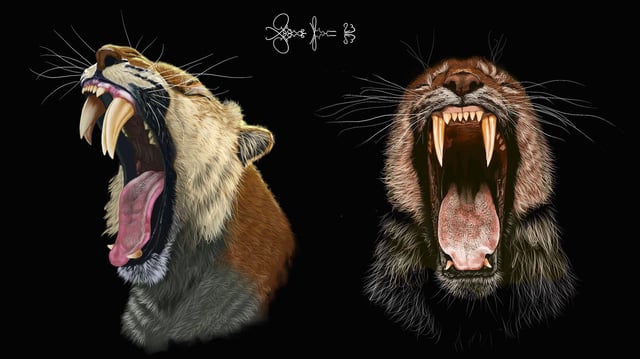Overview
- Saber-toothed cats, specifically Smilodon fatalis, retained their baby teeth alongside emerging adult fangs for up to 30 months, a new study finds.
- The presence of both baby and adult teeth in the same socket provided structural support, reducing the risk of the adult fangs breaking during growth.
- This adaptation likely allowed young saber-toothed cats to learn hunting skills without the risk of damaging their teeth.
- The findings, based on fossil evidence and mechanical simulations, challenge previous understandings of the species' dental development.
- Researchers suggest this evolutionary trait may have been present in other saber-toothed species, though evidence is yet to be found.
